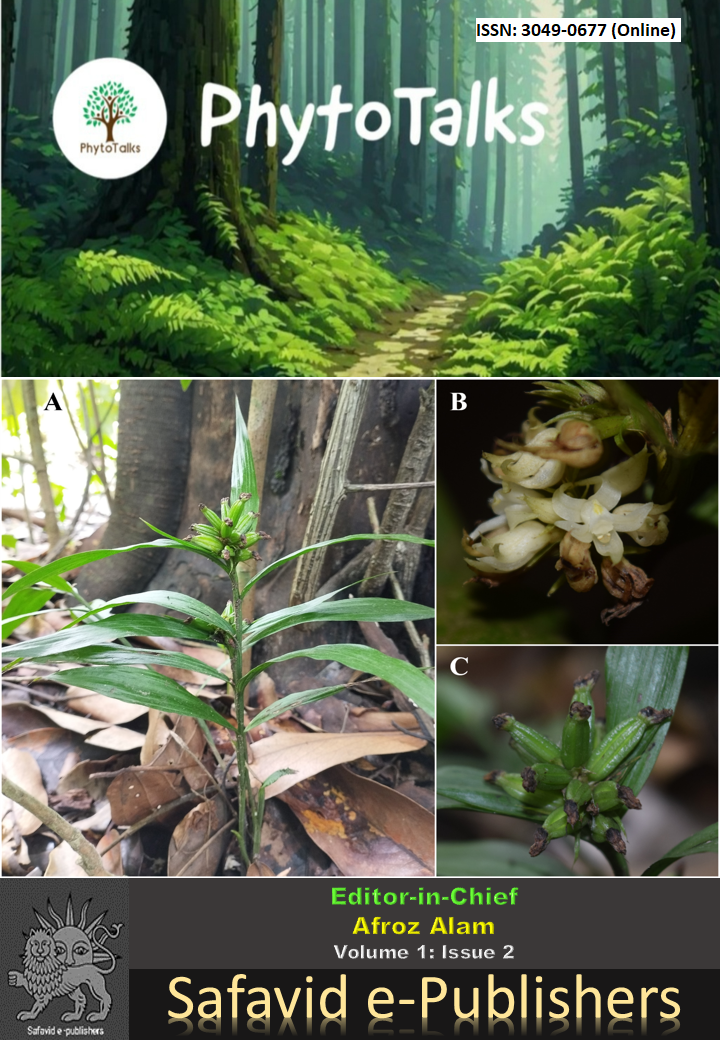The Effect of Radiation and Heat on the Germination of Radish Seeds
Radiation and heat effects on Radish seeds
DOI:
https://doi.org/10.21276/pt.2024.1.2.5Keywords:
Radiation, Heat, Germination, Radish seeds, MicrowaveAbstract
Scientists are investigating the impact of technology on the natural environment through experiments as humanity becomes more and more reliant on technology. To find out if microwave radiation exposure affects the germination of the radish seed, the following research was carried out. The findings indicate that microwave energy has an impact on radish seed germination. In comparison to a control set or another set of the radish seed that were microwaved for one or a half minute, seeds subjected to the microwave for four minutes exhibited over 150% more seeds germinating over a period of six days. These findings provide one instance of how the natural world responds to the radiant energy generated by artificial items. The impact of radiation and heat on germination will be covered in this essay.
References
Scialabba A, Tamburello C. (2002) Microwave effects on germination and growth of radish (Raphanus sativus L.) seedlings, Acta Bot Gallica. 2002; 149(2): 113-123. https://doi.org/10.1080/12538078.2002.10515947
Bari ML, Nei D, Enomoto K, Todoriki S, Kawamoto S. Combination Treatments for Killing Escherichia coli O157:H7 on Alfalfa, Radish, Broccoli, and Mung Bean Seeds. J Food Prot. 2009; 72(3): 631–636.
Bari ML, Nazuka E, Sabina Y, Todoriki S, Isshiki K. Chemical and Irradiation Treatments for Killing Escherichia coli O157:H7 on Alfalfa, Radish, and Mung Bean Seeds. J Food Prot. 2003; 66(5):767–774.
Sadhu S, Thirumdas R, Deshmukh RR, Annapure US. Influence of cold plasma on the enzymatic activity in germinating mung beans (Vigna radiata). LWT - Food Sci Technol. 2017; 78:97–104.
Iranbakhsh A, Ghoranneviss M, Oraghi Ardebili Z et al (2017) non-thermal plasma modifed growth and physiology in Triticum aestivum via generated signaling molecules and UV radiation. Biol Plant. 2016; 61:702–708.
Varnagiris S, Vilimaite S, Mikelionyte I et al. The combination of simultaneous plasma treatment with mg nanoparticles deposition technique for better mung bean seeds germination. Processes. 2020; 8:1575.
Krupa SV. Ultraviolet-B radiation, ozone and plant biology. Environmental. Pollution. 2000; 110(2):193–4.
Solomon S. Stratospheric ozone depletion: A review of concepts and history. Rev Geophys. 1999; 37(3):275–316.
Marcu D, Damian G, Cosma C, Cristea V. Gamma radiation effects on seed germination, growth and pigment content, and ESR study of induced free radicals in maize (Zea mays). J Biol Phys. 2013;39(4):625-34. https://doi.org/10.1007/s10867-013-9322-z
IPCC, 2007: Summary for Policymakers. In: Climate Change 2007: The Physical Science Basis. Contribution of Working Group I to the Fourth Assessment Report of the Z. Chen, M. Marquis, K.B. Averyt, M. Tignor and H.L. Miller (eds.)]. Cambridge University Press, Cambridge, United Kingdom and New York, NY, USA.
Teramura AH. 1983. Effects of ultraviolet-B radiation on the growth and yield of crop plants. Physiol Plant. 1983; 58(3):415–427.
Scialabba A, Tamburello C. Microwave Effects on Germination and Growth of Radish. Acta Bot Gallica. 2002; 149(2):113. https://doi.org/10.1080/12538078.2002.10515947
Nambara E, Hiroyuki N. Seed Biology in the 21st Century: Perspectives and New Directions. Plant Cell Physiol. 2012; 53(1):1-4.
Campbell NA Neil. Biology Exploring Life. Pearson Education Inc. New Jersey, 2004.p. 445.
Kroger C, Reddy K, Poston D. “Factors Affecting Seed Germination, Seedling Emergence, and Survival of Texas weed (Caperonia palustris)”. Weed Science Society of America. 2004; 52(6):989.
Awan T, Chauhan B, Cruz P. “Influence of Environmental Factors on the Germination of Urena lobata L. and its Response to Herbicides”. Plos ONE. 2014; 9(3): e90305.
Ragha L, Mishra S, Ramachandran V, Singh, Bhatia M. Effects of Low-Power Microwave Fields on Seed Germination and Growth Rate. Journal of Electromagnetic Analysis and Applications. 2011; 3(5): 165-171.
Teramura AH. Effects of ultraviolet-B radiation on the growth and yield of crop plants. Physiol Plant. 1983; 58(3):415–427.
Tevini M, W Iwanzik, and U Thoma. Some effects of enhanced UV-B irradiation on the growth and composition of plants. Planta. 1981; 153(4):388–394.
Tezuka T, T Hotta, I Watanabe. Growth promotion of tomato and radish plants by solar UV radiation reaching the Earth’s surface. J Photochem Photobiol. B. 1993; 19(1):61–66.
Tezuka T, F Yamaguchi, and Y Ando. 1994. Physiological activation in radish plants by UV-A radiation. J Photochem Photobiol. B.1994; 24(1):33–40.
Published
Versions
- 2025-01-29 (4)
- 2024-09-26 (3)
- 2024-08-01 (2)
- 2024-07-30 (1)
Issue
Section
License
Copyright (c) 2024 PhytoTalks

This work is licensed under a Creative Commons Attribution-NonCommercial 4.0 International License.
Copyright and License Terms
Authors who publish with this journal agree to the following terms:
- Authors retain the copyright to their work and grant the journal the right of first publication. The work is simultaneously licensed under a Creative Commons Attribution License permitting others to share it with proper acknowledgement of the authorship and its original publication in this journal.
- Authors may enter into additional, non-exclusive agreements for distributing the published version of their work (e.g., depositing it in an institutional repository or including it in a book), provided they acknowledge that the work was first published in this journal.
Open Access Policy
License
PhytoTalks is an open-access journal, allowing readers to access all published articles without registration. All articles are distributed under the Creative Commons Attribution License (CC Attribution 4.0), which permits unrestricted use, distribution, and reproduction in any medium, provided the original author and source are properly credited. (https://creativecommons.org/licenses/by/4.0/).
License summary:
This license allows others to:
-
Share — copy and redistribute the material in any medium or format
-
Adapt — remix, transform, and build upon the material for any purpose, even commercially
Under the following terms: -
Attribution — appropriate credit must be given, a link to the license provided, and indication if changes were made.
Author Warranties
By submitting a manuscript to PhytoTalks, authors confirm that:
-
The work is original and does not infringe any copyright, trademark, patent, or other rights of third parties.
-
The work has not been published elsewhere (except as a preprint) and is not under consideration by another publication.
-
All necessary permissions for any third-party materials used in the manuscript have been obtained.
Citation Policy
When using or citing articles from PhytoTalks, proper attribution must be given to the original authors and the source, including a DOI link where available.


![Announcement: Special Conference Issue of Phytotalks We are pleased to announce that Phytotalks will publish a special issue featuring select peer-reviewed papers from the Third International Conference on Plant Functional Biology, an esteemed international gathering of experts in Plant Science]. This special issue will highlight cutting-edge research and innovative developments presented at the conference, offering our readers valuable insights into the latest advancements in the field. Stay tuned for this upcoming edition, which reflects our continued commitment to showcasing high-quality, impactful research.](https://phytotalks.com/public/site/images/afrozalam/img-20250701-wa0010.jpg)



































